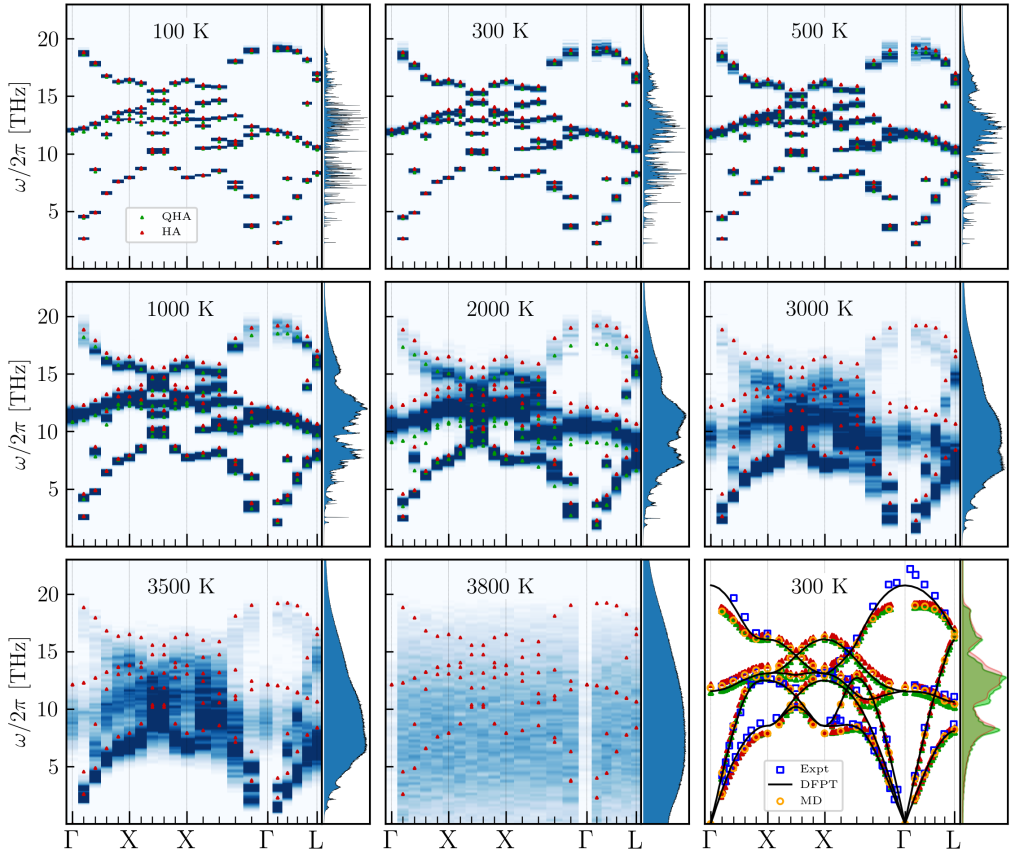Breakdown of phonon band theory in MgO

The vibrational spectra of crystals, on which many thermal and mechanical properties depend, are known to be highly structured at low temperatures, with all of the energy restricted to a set of surfaces in reciprocal spacetime, known as the phonon bands. However little is known about how energy is distributed at extreme temperatures, either because perturbation theories fail or because experimental spectra are not available.
TYC members at Imperial College London used molecular dynamics simulations to calculate a series of images that show the gradual breakdown of the phonon bands of MgO as it is heated. A rapid degradation of the optical bands was observed, followed by the sudden disappearance of the acoustic bands upon melting. In the process, a strong, nonresonant, unidirectional mechanism by which acoustic modes change the optical spectrum was discovered: by warping the electric fields that are intrinsic to longitudinal optical vibrations, low frequency acoustic vibrations disrupt optical vibrations and modulate their frequencies over a wide range.
The method used, which involves simulating the motions of atoms and analysing their trajectories, can be applied to any solid or liquid whose interatomic forces can be calculated accurately and efficiently. Its accuracy is not reduced by strong phononic correlations, and its applicability is not restricted to materials at thermal equilibrium. Therefore it seems certain to play a central role in the burgeoning field of strongly correlated phonon physics.
Authors: Gabriele Coiana, Johannes Lischner, and Paul Tangney
https://journals.aps.org/prb/abstract/10.1103/PhysRevB.109.014310
